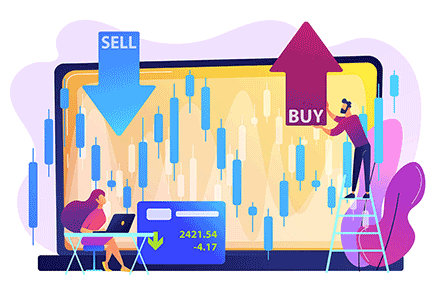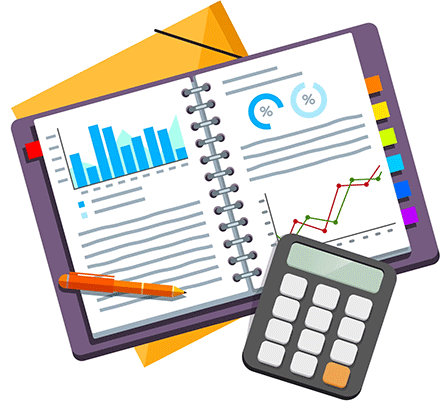A Dive into Forex Broker Fees, Commissions, Swaps and Spreads: How to Select Brokers with Transparent Fee Structures
One of the most crucial aspects to consider is the fee structure. In this article, we'll delve into the various fees, commissions, and spreads that Forex brokers may charge and provide insights on how to choose the best forex brokers with transparent fee structures.
Understanding Forex Broker Fees
Before you begin trading Forex, it's essential to comprehend the different fees you might encounter. These can generally be categorized into three main types:
- Spread: The spread is the primary way Forex brokers earn money. It is the difference between the buying (ask) and selling (bid) prices of a currency pair. Brokers usually offer two types of spreads: fixed and variable. Fixed spreads remain constant regardless of market conditions, while variable spreads can widen or narrow depending on market volatility. Transparent brokers clearly specify their spread rates.
- Commissions: Some brokers charge a commission on each trade, especially for professional and ECN (Electronic Communication Network) accounts. Commissions are typically calculated based on the trading volume, expressed per lot or per million units of the base currency. Transparent brokers clearly outline their commission structure.
- Swap or Overnight Financing Fees: Forex is a 24-hour market, and positions can be held overnight. When this happens, brokers may charge or pay interest based on the interest rate differential between the two currencies being traded. It's crucial to understand these fees if you plan to hold positions overnight.
Forex Trading Spreads: Understanding Costs and Choosing the Right Broker
When stepping into the world of Forex trading, you encounter a fundamental concept that can significantly impact your trading success: the spread. Understanding what spreads are, how they work, and their implications is essential for any trader. In this comprehensive guide, we will delve into the intricacies of spreads in Forex trading, their types, and how to choose the right broker with a suitable spread structure.
Understanding Forex Spreads
One of the most prevalent fees charged by forex brokers is the spread. The spread represents the disparity between the buying and selling prices of a currency pair. Brokers generate revenue by introducing a margin to the market price, resulting in a higher selling price and a lower buying price. This margin, known as the spread, is typically measured in pips. Pips, or "percentage in point," denote the smallest unit of measurement for currency pairs. For example, if the EUR/USD currency pair has a spread of 2 pips, the broker charges a fee equivalent to 2 pips for each trade. In essence, the wider the spread, the greater the cost of trading. Consequently, selecting a broker offering competitive spreads becomes paramount to mitigate trading expenses.
Forex brokers provide you with two crucial prices for any currency pair: the bid and ask prices. These prices determine how you can buy or sell a currency pair.
- Bid Price: This is the price at which you can sell the base currency.
- Ask Price: This is the price at which you can buy the base currency.
The spread, often referred to as the "bid/ask spread," is the difference between these two prices. It is essentially the cost of executing a Forex trade. Unlike traditional brokerage services that charge separate commissions, Forex brokers typically incorporate their fees into the spread. This spread serves as the broker's compensation for facilitating your trades.
In simpler terms, it's akin to selling your old iPhone to a store. The store buys it from you at a lower price than they sell it for, and the difference represents their profit – in Forex, this difference is the spread.
Measuring the Spread in Forex Trading
Spreads are usually measured in pips, which is the smallest unit of price movement in a currency pair. For most major currency pairs, one pip is equivalent to 0.0001. To illustrate, if the EUR/USD currency pair has a spread of 2 pips, it would be quoted as 1.1051/1.1053. However, currency pairs involving the Japanese yen are an exception. They are quoted with only two decimal places unless fractional pips are involved, in which case three decimals are used. For instance, USD/JPY may be quoted as 110.00/110.04, indicating a spread of 4 pips.
Types of Spreads in Forex Trading
The type of spreads you encounter when trading Forex depends on the broker's business model and how they generate revenue. There are primarily two types of spreads.
- Fixed Spreads: These spreads remain constant, unaffected by market conditions. Brokers offering fixed spreads typically operate using a market maker or "dealing desk" model. In this model, brokers buy large positions from liquidity providers and offer them in smaller sizes to traders. Fixed spreads are advantageous for traders with smaller accounts, as they provide predictable transaction costs. However, they may result in requotes during fast-moving markets and can lead to slippage. With fixed spreads, the spread remains constant irrespective of market conditions. While fixed spreads provide predictability, they may not be as cost-effective during periods of low market volatility.
- Variable (Floating) Spreads: Variable spreads are dynamic and change in response to market conditions. They are offered by non-dealing desk brokers, which source pricing from multiple liquidity providers. Variable spreads are often wider during periods of low liquidity or high market volatility, such as economic releases or major news events. While they eliminate requotes, they can pose challenges for scalpers and news traders. Conversely, variable spreads fluctuate in response to market volatility. During tranquil market phases, variable spreads tend to be narrower, translating into reduced trading costs. However, they can widen considerably during turbulent market conditions.
Choosing Between Fixed and Variable Spreads
The choice between fixed and variable spreads depends on your trading style, account size, and preferences. Here are some considerations:
- Fixed Spreads: Suitable for traders with smaller accounts and those who value predictable transaction costs. Fixed spreads are ideal for traders who do not frequently enter or exit trades during volatile market conditions.
- Variable Spreads: Preferred by traders with larger accounts and those who engage in frequent trading, especially during peak market hours. Variable spreads provide transparent pricing and are less prone to requotes.
Ultimately, the decision boils down to your specific trading needs and risk tolerance.
Spreads are an integral part of Forex trading, impacting your trading costs and overall profitability. It's essential to understand how spreads work, their measurement in pips, and the types of spreads offered by brokers. When selecting a broker, consider your trading style and account size to determine whether fixed or variable spreads are more suitable for your needs. A thorough understanding of spreads will empower you to make informed trading decisions and navigate the Forex market with confidence.
Unlocking the Mysteries of Forex Swaps: An In-Depth Exploration
In the realm of forex trading, a term that frequently arises is the "swap." Often referred to as a forex swap or forex rollover rate, it represents the interest earned or paid for keeping a trading position open overnight. In this comprehensive guide, we will dive deeper into what a forex swap entails, how it is calculated, the factors that affect it, and various strategies traders employ to navigate this crucial aspect of forex trading.
Demystifying Forex Swaps
A forex swap is the interest that traders either earn or pay when holding a trading position overnight. It is essential to distinguish a forex swap from the broader concept of a "rollover." While rollover indeed extends the settlement date of an open trade, the forex swap, often referred to as the swap rate or rollover interest rate, pertains specifically to the interest rate differential between the two currencies involved in the trade.
To understand how a forex swap works, consider this: when a trader extends a position overnight, they are essentially borrowing funds to maintain that position. The interest rate applied to this borrowed amount is what we commonly refer to as the forex swap.
The Mechanics of Forex Swaps
Forex traders use currency pairs, with the base currency listed first and the quote currency listed second. For instance, in the GBP/USD currency pair, the pound is the base currency, and the dollar is the quote currency. When a trader opens a position, they are essentially buying one currency in the pair and selling the other.
Whether a trader earns or pays a swap depends on the interest rates associated with each currency in the pair. If the currency being bought has a higher interest rate than the one being sold, a swap will be credited to the trader's account. Conversely, if the interest rate of the purchased currency is lower, a swap will be charged from the trader's account.
However, it's important to note that swaps only come into play when a trade is held open for more than one day. If a trader opens and closes a position within the same trading day, there are no swap charges or credits.
Understanding Rollovers
A critical aspect of forex swaps is the concept of "rollovers." Rollovers occur daily at 21:00 GMT and involve the transfer of open positions with a specific value date to the next business day. This practice, also known as the "tomorrow-next day" or "tom-next" rate, prevents traders from having to take physical delivery of currency while allowing them to extend their forex positions beyond the expected delivery date.
For instance, if a trader holds a position in spot GBP/USD with a value date of Wednesday on Monday, as Monday draws to a close (at 17:00 ET Time), the position rolls forward to Thursday. The rollover rate reflects the price difference between these two value dates. It's essentially the mechanism that allows traders to extend their positions without the need for physical delivery.
Factors Affecting Rollover Interest Rates
Several factors impact rollover interest rates:
- Currency Pair: Different currency pairs have varying interest rates, depending on the countries' central banks that issue the currencies. The interest rate differential between the base and quote currencies in a pair plays a significant role in determining the swap rate.
- Direction and Position Size: The direction of a trader's position (long or short) and the size of the position influence the swap rate. Traders need to consider these factors when calculating potential swap costs or credits.
- Central Banks: Central banks worldwide set interest rates that affect rollover interest rates. Brokers may choose to apply the central bank interest rates directly or modify them based on market conditions.
- Broker Policies: Brokers vary in how they handle rollovers. Some brokers adhere strictly to central bank interest rates, while others may adjust rollover rates in their favor. Traders should research and choose a broker that aligns with their trading preferences.
Forex Swaps Trading Strategies
Traders employ various strategies to manage and capitalize on forex swaps:
- Long Position Strategy: Long-term traders holding positions for extended periods must monitor swap rates closely, as these rates accumulate daily, impacting their balance.
- Short Position Strategy: Short-term traders may be less affected by swap rates, as their positions are held for shorter durations.
- Carry Trading: This strategy involves earning interest on a trading position through the forex swap. Traders often borrow in a currency with a low-interest rate and invest in a currency with a higher interest rate. While it offers the potential for interest income, it comes with inherent risks, and market movements can erase profits.
- Hedging with Forex Swaps: Currency swaps can be used for hedging against exchange rate fluctuations. Traders can protect their positions from unfavorable market movements by employing forex swaps strategically.
- Risk Management with Forex Swaps: Forex swaps can serve as useful tools for risk management. Swapped amounts can act as collateral for repayment in certain scenarios.
In the world of forex trading, a forex swap represents the interest earned or paid when keeping a trading position open overnight. It can either bolster profits or act as a cost, depending on the swap rate and the direction of the trade. Understanding rollovers, the factors affecting swap rates, and employing suitable trading strategies are essential components of successful forex trading.
It's crucial to remember that forex markets are volatile, and leverage can magnify both gains and losses. Traders should approach forex swaps with a solid risk management strategy and only trade with funds they can afford to lose. Furthermore, diligent research into brokers' policies and swap rates will empower traders to make informed decisions and navigate the intricate world of forex swaps with confidence.
Mastering the Art of Paying Your Forex Broker: A Comprehensive Guide
The forex market stands out from other exchange-driven markets due to its alluring proposition for traders: no exchange fees, no regulatory fees, no data fees, and, most appealingly, no commissions. For budding traders eager to step into the trading arena, this offer may seem too good to be true. While trading without transaction costs is undoubtedly an advantage, it's essential to unravel the intricacies of forex broker fee and commission structures to make an informed decision.
Commission Structures
Forex brokers employ three main commission structures. Some offer a fixed spread, others present a variable spread, and there are those who charge a commission based on a percentage of the spread. The choice between these structures may appear straightforward at first glance, but several factors warrant consideration. The spread signifies the gap between the price at which the market maker is willing to purchase a currency (the bid price) and the price at which they will sell the currency (the ask price). For instance, if you see the following quotes on your screen: "EURUSD - 1.4952 - 1.4955," it represents a spread of three pips, which is the difference between the bid price of 1.4952 and the ask price of 1.4955. When dealing with a market maker offering a fixed spread of three pips instead of a variable spread, the difference remains constant at three pips, irrespective of market volatility.
Conversely, brokers with variable spreads may offer spreads that fluctuate between 1.5 pips and five pips, depending on the traded currency pair and market volatility. Additionally, some brokers levy a minor commission, often two-tenths of one pip, before routing the order flow to a larger market maker with whom they maintain a professional relationship. In such arrangements, traders may access a highly competitive spread that would otherwise be available only to larger participants.
Different Brokers, Different Service Levels
However, discerning the ultimate impact of each commission structure on your trading is complex, given that not all brokers are equal. The forex market operates as an over-the-counter market, devoid of guarantors or exchanges. Instead, it relies on credit agreements between players. For online market makers, a broker's effectiveness hinges on its relationships with banks and the trading volume it conducts. Generally, higher-volume forex players receive tighter spreads.
Traders might favor brokers that offer guaranteed liquidity with competitive spreads. Conversely, traders may opt for a fixed pip spread if they require precise execution each time, avoiding the potential costs associated with slippage.
For commission-based brokers, the decision to pay a small commission depends on the overall broker offering. If a broker charges a minor commission, say two-tenths of one pip (equivalent to approximately $2.50 to $3 per 100,000 unit trade), but provides access to a superior proprietary software platform or other significant benefits, the commission may be a worthwhile trade-off.
Choosing the Right Forex Broker
As a trader, evaluating a broker encompasses more than just considering their fee and commission structures. You should assess the complete package. Some brokers might offer attractive spreads but lack advanced features found with competitors. When selecting a brokerage firm, examine:
- Capitalization: Is the firm well-capitalized?
- Experience: How long has the firm been in business?
- Management: Who leads the firm, and what is their experience?
- Bank Relationships: How many and which banks does the firm collaborate with?
- Volume: How much trading volume does the firm handle each month?
- Liquidity Guarantees: What are the firm's liquidity guarantees concerning order size?
- Margin and Rollover Policies: How does the firm handle margin and rollover?
- Spread and Rollover Additions: Does the firm add a spread to rollover interest rates?
- Trading Platform: What kind of platform does it provide?
- Order Types: Does it offer various order types?
- Stop Loss Execution: Can the firm guarantee stop losses at the order price?
- Dealing Desk: Does the firm operate a dealing desk?
- Disconnection Contingencies: What happens if you lose internet connectivity with an open position?
- Back-End Office Functions: Does the firm provide real-time P&L data?
While variable spreads may appear economical, traders may be surrendering other advantages. Nonetheless, one fact remains constant: traders pay the spread, and brokers profit from it. To optimize your trading experience, select a reputable broker that is well-capitalized and maintains robust relationships with major forex banks. Examine spreads for popular currencies; they can often be as tight as 1.5 pips. In such cases, a variable spread might be more cost-effective than a fixed one. Some brokers even provide the option of choosing between fixed and variable spreads. Ultimately, the most economical way to trade is with a well-established market maker offering the liquidity required for successful trading.
Selecting Brokers with Transparent Fee Structures
To ensure you choose a Forex broker with a transparent fee structure that aligns with your trading style, consider the following factors:
- Read the Fine Print: Start by thoroughly reviewing a broker's terms and conditions, especially the sections related to fees and commissions. Transparent brokers provide clear and concise information about their fee structure.
- Compare Spreads: Compare the spreads offered by different brokers for the currency pairs you intend to trade. A narrower spread can be more cost-effective, but ensure that the broker maintains consistency in spread width during volatile market conditions.
- Check for Hidden Fees: Beware of brokers that may impose hidden fees or markups. These can include additional charges for deposits, withdrawals, or inactivity. Transparent brokers disclose all potential fees upfront.
- Understand Commission Models: If a broker charges commissions, understand their commission model. Is it per lot, per trade, or per million units? Ensure you know how commissions will affect your trading costs.
- Consider Overnight Financing: If you plan to hold positions overnight, investigate the broker's swap rates. A transparent broker provides swap rate information on their website or trading platform.
- Regulatory Compliance: Choose a broker regulated by a reputable authority such as the Financial Conduct Authority (FCA) in the UK or the Commodity Futures Trading Commission (CFTC) in the United States. Regulatory bodies often require brokers to maintain transparency in their fee structures.
- Demo Accounts: Many brokers offer demo accounts that allow you to practice trading without risking real money. Use this opportunity to assess how fees are applied in a live trading environment.
- Client Reviews and Reputation: Research the broker's reputation by reading client reviews and conducting due diligence. Traders often share their experiences with a broker's fee structure and overall service quality.
- Customer Support: Transparent brokers have responsive customer support teams that can answer your questions regarding fees and commissions promptly and clearly.
Selecting a Forex broker with a transparent fee structure is crucial for your trading success. By understanding the various fees, commissions, and spreads that brokers may charge, and by following the tips outlined in this article, you can make an informed decision. Remember that transparency builds trust, and reputable brokers are committed to providing clear and fair fee structures to their clients, ensuring a positive and profitable trading experience.
Brokerage Fees: A Comprehensive Guide to Understanding and Comparing
Brokers serve as the essential bridge connecting traders (buyers) and sellers, facilitating efficient trading operations. But, have you ever wondered how these brokerage firms actually make money? The answer is quite straightforward – traders pay fees to brokers for the privilege of conducting online trading. These fees can manifest as either a flat rate or a percentage of the transaction value, contingent upon the specific broker's policies. Traders and investors leverage brokerage services to oversee their investments and achieve their financial objectives through trading. In this article, we delve into brokerage or broker fees, exploring their types and providing insights into the best online brokers for trading.
In essence, brokerage fees encompass the funds you disburse for availing yourself of the services offered by a brokerage to facilitate your trading and investment management endeavors. Broker fees may encompass various elements, such as transaction fees, withdrawal fees, inactivity fees, research information fees, annual fees, and more. Comprehending the complete fee structure, along with the underlying policies, is paramount for effective fund management and informed trading.
Brokerage fee structures and regulations are far from uniform across the industry, typically falling into two primary fee categories:
- Trading Fees: These fees are levied solely when you execute a trade. They may encompass conversion fees, margin rates, financing rates, spreads, or commissions.
- Non-Trading Fees: These fees are unrelated to your trading activity and may include inactivity fees, withdrawal fees, deposit fees, and more.
It's essential to recognize that not all brokers impose identical fees for the same services. There exists a wide array of brokerage fees, each warranting a distinct comprehension to enable more prudent fund management and trading decisions. Here's a comprehensive breakdown of various brokerage fees for your benefit.
Spread
The spread signifies the variance between the "bid" price (the price at which a security can be sold) and the "ask" price (the price at which it can be bought). For instance, if you purchase a share of ABC at $101 and its sell price is $100, the immediate sale of the share at $101 would result in a $1 loss, constituting your spread cost. Wider spreads on a particular asset translate to higher costs. Renowned stockbrokers typically rely on market spreads for assets, incorporating no additional fees into their spreads. This practice often benefits traders in comparison to the spread charges imposed by CFD brokers. CFD brokerages often include extra fees within their quoted spreads, leading to a wider spread cost compared to the actual market spread. In the realm of Forex trading, the spread represents the discrepancy between the BID and ASK prices in the currency pair quote. Brokers may widen the spread beyond the market spread, capitalizing on the price difference. For example, if the EUR/USD market spread is 0.2 pips, and a broker offers traders a spread of 1.4 pips, the broker's earnings amount to 1.2 pips, roughly equivalent to $12 per lot.
- Commissions. Certain brokers charge a commission as either a fixed per-trade fee or one based on your traded volume. The latter method may not be advantageous for traders dealing with low-priced shares. For instance, purchasing shares worth $1,000, with each share priced at less than $1, can result in substantial costs compared to a scenario where each share is valued at $100.
- Margin Rate. Margin trading involves borrowing funds from your broker to facilitate trading. For instance, with a $1,000 initial deposit in your margin account, you can execute trades worth significantly more than $1,000. However, you'll need to pay interest on the borrowed funds, typically ranging from 1% to 5%.
- Conversion Fee. Brokers may charge a currency conversion fee if you trade instruments in a currency other than your account's base currency. This fee varies between brokers, with some, like Admiral Markets, imposing a 1% charge on the total amount.
- Deposit and Withdrawal. Many brokers don't mandate a minimum deposit or charge withdrawal fees. However, certain brokerages stipulate specific minimum deposit requirements and impose fees based on the chosen withdrawal and deposit methods.
- Inactivity Fee. Several brokerages implement inactivity fee policies, necessitating payment of a monthly fee if an account remains inactive for a defined period, typically spanning 12 to 24 months. Inactivity fees typically range from $5 to $20 per month.
Comparing Forex Brokers Fees
Forex trading ranks among the most popular trading disciplines, characterized by high volatility. Choosing a brokerage offering an excellent trading environment, coupled with an affordable fee structure, is crucial. The following tables provide an overview of the fee structures of the best Forex brokers available in the market, helping you select the one aligning with your financial objectives and preferences.
Top 10 Brokers with Transparent Fees, Spreads, and Commissions
Choosing the right Forex broker is paramount for traders seeking to optimize their trading strategy, align with their investment goals, and manage their budget effectively. Whether you're a seasoned trader or a newcomer to the Forex world, the cost of trading can significantly impact your profitability. In this article, we present the top 10 Forex brokers renowned for their transparent fee structures, competitive spreads, and reasonable commissions.
Swissquote stands out with its absence of inactivity fees and an extensive selection of funds available at favorable rates. However, trading fees, especially for stocks and ETFs, tend to be relatively high. There's also a withdrawal fee, and the average spread cost amounts to 1.6 pips.
- XM offers a range of account types, each with varying spreads. Across all accounts, the minimum spread is 0.1 pips, while the average spread for major pairs like EUR/USD stands at 0.1 pips. XM follows a strict "no hidden fees or commission" policy, reserving commissions for XM Zero accounts. The broker covers all transfer fees and guarantees same-day withdrawals.
- Forex.com takes a unique approach, charging no direct fee for forex trades. Instead, it derives its compensation from the spread. While the largest forex pairs and shares exhibit average spreads, the broker offers below-average costs for index and commodity CFDs. Forex.com presents four different pricing models based on the account type and trading volume, with spreads ranging from 1.9 pips to 0.84 pips.
- FXCM structures its fees based on the trading instrument and the type of account utilized by traders. The Active Trader account garners popularity for its low commission rates and competitive pricing, particularly for high-volume traders.
- Pepperstone's fees revolve around tight spreads and low commissions, fostering a cost-effective environment for traders. The average spread for the EUR/USD currency pair in its Razor accounts is a mere 0.13 pips, complemented by a €7 commission.
- Oanda excels in offering low CFD and forex fees, coupled with reasonable non-trading fees. Although the withdrawal fee for bank transfers is relatively high, the fees are incorporated into the spread, with an average spread cost of 1.2 pips.
- eToro's fee structure varies depending on your location and the asset classes you trade. U.S. customers trading cryptocurrencies encounter fees ranging from 0.75% to 5.0%, depending on the specific currency. Non-U.S. customers trading stocks do not incur commissions for opening or closing long positions, while short sales entail a 0.18% commission. Additionally, non-U.S. customers conducting transactions in currencies other than their home currency are subject to a currency conversion fee.
- Saxo Bank primarily utilizes volume-based commissions for its fees. For forex fees, a 0.005% commission rate is standard, applicable only to the first $50 million traded in a month. Withdrawals can be processed to either your bank account or a broker account, free of charge.
- Easy Markets offers relatively low commission percentages for Forex traders and competitive spreads. The choice of account type can influence spreads, with both fixed and floating options available. The company provides transparent pricing information for users to access freely.
- FXTM offers relatively low commission percentages for Forex traders and competitive spreads. With ECN account options, spreads can be as low as 0.1 points. While spreads start slightly higher with the Standard Account, they remain highly competitive. Spreads at FXTM fluctuate throughout the day, adapting to market conditions.
- HYCM bases its compensation on market bid/ask spreads, which vary depending on the underlying financial instrument and the chosen account type. Data is sourced from reputable third-party providers, ensuring transparency.
Each of these brokers provides distinct advantages and may cater to specific trading preferences. When selecting the ideal broker, consider your geographic location, asset classes of interest, and trading volume, ensuring alignment with your unique trading requirements. Remember that the Forex market is dynamic, and broker offerings can evolve over time, so staying informed is crucial to making informed decisions in this ever-changing landscape.
Related Materials
Forex trading, an intricate dance of buying and selling currency pairs such as EUR/USD, GBP/USD, and USD/JPY, operates continuously five days a week. Often called foreign exchange trading, the core objective is to profit from shifts in currency pair values.
The forex market has witnessed a rise in the popularity of Percentage Allocation Management Module (PAMM) services, as both retail traders and institutional investors seek out ways to diversify their portfolios and earn passive income. As 2023 unfolds, it's pivotal to identify which brokers are at the forefront of offering top-notch PAMM services..
Copy trading, a revolutionary method in the trading world, has emerged as a boon for both seasoned traders and beginners. It's an automation process that allows traders to mirror the moves of more experienced counterparts.
If the concept of hedging in the world of Forex has left you intrigued, search no further. This comprehensive article will unravel the intricacies of Forex hedging, furnish you with a practical example of a Forex hedging strategy, and delve into the "Hold Forex Strategy" and more.
Leverage is a powerful tool in the world of forex trading. It allows traders to control a large position size with a relatively small amount of capital, amplifying both profits and losses. While leverage can enhance potential gains, it also comes with significant risks. Therefore, choosing the right forex broker and evaluating their leverage offering is crucial for traders seeking success in the competitive forex market.
In the vast and dynamic landscape of global finance, the Forex market reigns supreme, presenting both unparalleled opportunities and significant challenges. At the heart of this complex ecosystem is the principle of risk management, a foundational pillar for anyone looking to navigate the often turbulent waters of Forex trading. In essence, risk management in Forex trading isn't merely a safety mechanism; it's an integral part of a holistic trading strategy, ensuring sustainability, promoting discipline, and maximizing the potential for success.
Brokers have a variety of ways in which they charge traders for their services. Understanding these fees and commissions is crucial for any trader who wants to manage their trading costs effectively.
The dynamics of the Forex market have dramatically evolved over the past few years, not just in terms of technology and tools, but also in how traders interact and share information...
Currency exchange rates are one of the most closely watched and analyzed metrics in the global financial market. Every day, businesses, tourists, governments, and traders seek to understand and anticipate changes in these rates, as they affect everything from the price of your morning coffee to billion-dollar business deals...
In the rapidly evolving world of online trading, where decision-making speed, strategy efficacy, and real-time responsiveness play crucial roles, preparation becomes paramount. This is where demo accounts enter the scene, offering aspirants and seasoned traders alike an invaluable platform. Designed to mimic real-world trading conditions without actual financial risk, demo accounts serve as a bridge between theoretical knowledge and real-world trading execution. They provide an arena for traders to practice, learn, and refine their strategies, ensuring they're equipped with the experience and confidence needed to navigate the often tumultuous waters of the financial markets.
Trusted Forex Brokers
| Broker | Review | Rating | |
|---|---|---|---|
| 1 | HF Markets | ||
| 2 | NordFX | ||
| 3 | Octa | ||
| 4 | FXCM | ||
| 5 | Interactive Brokers | ||
| 6 | ActivTrades | ||
| 7 | FXTM | ||
| 8 | easyMarkets | ||
| 9 | HYCM | ||
| 10 | SaxoBank | ||
| 11 | FxPro | ||
| 12 | Moneta Markets | ||
| 13 | XM | ||
| 14 | FOREX.com | ||
| 15 | Admirals | ||
| 16 | eToro | ||
| 17 | FIBO Group | ||
| 18 | Pepperstone | ||
| 19 | PrimeXBT | ||
| 20 | IronFX | ||
| 21 | Forex4you | ||
| 22 | InstaForex | ||
| 23 | INGOT Brokers | ||
| 24 | Swissquote Bank | ||
| 25 | Oanda |









